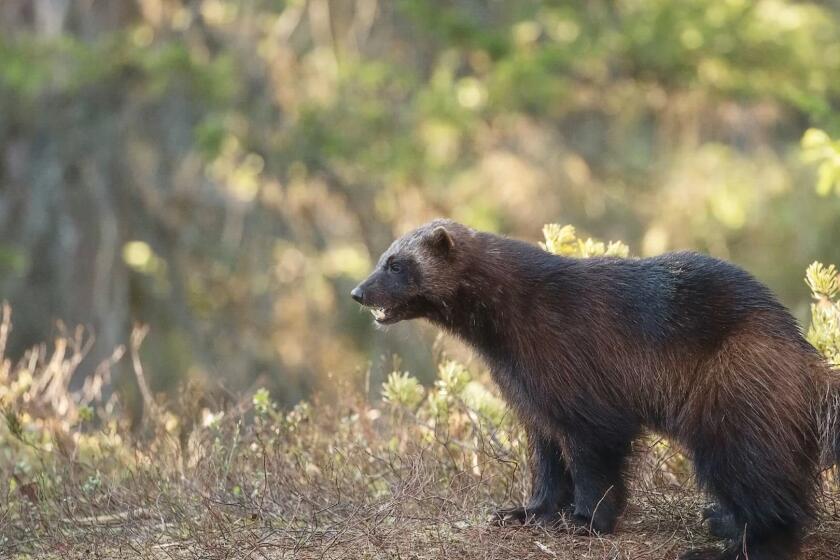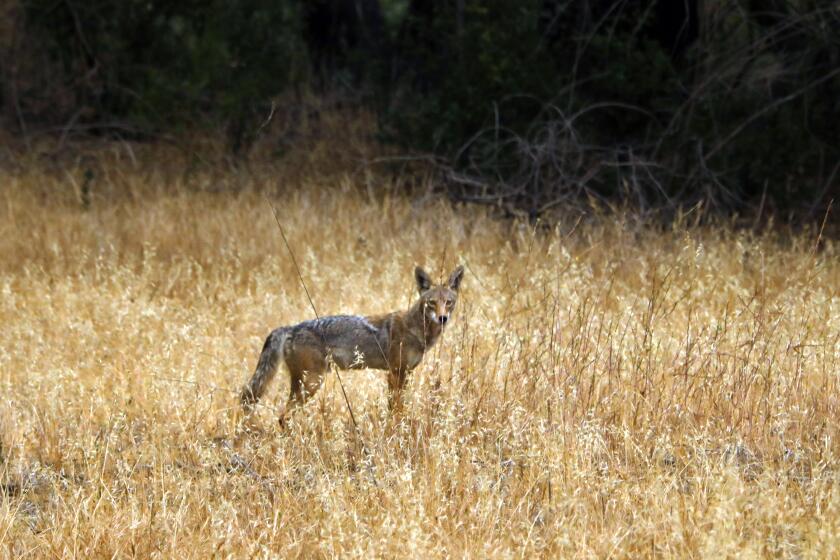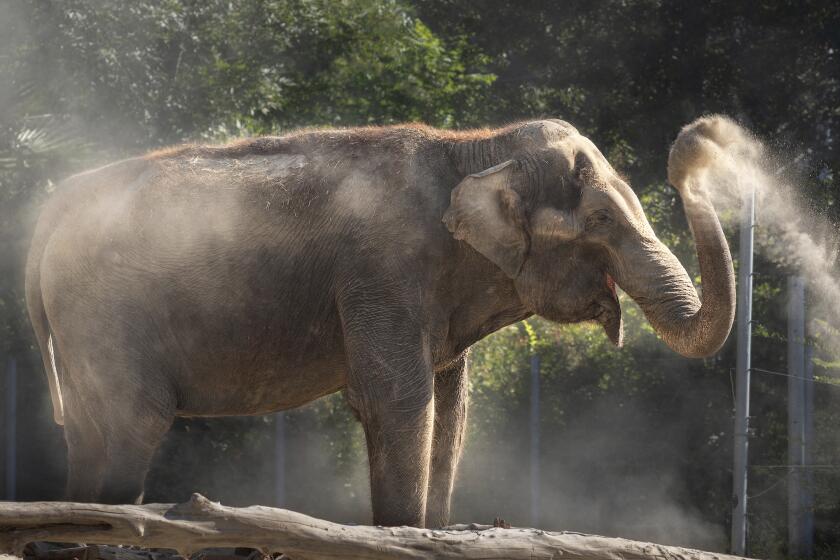Abalone Fishery Off Southland May Reopen
California Fish and Game commissioners have agreed with former abalone divers to reopen a commercial abalone fishery in Southern California, ignoring the advice of state biologists who warn it could thwart recovery of the delicious mollusk decimated by excessive harvesting.
The decision, which must first pass an extensive environmental review, could mean the return of large abalone steaks in upscale restaurants and markets and a lucrative catch for the abalone divers who have struggled since the commercial fishery was closed in 1997.
Full-size red abalone, poached from waters mostly off Northern California, routinely fetch $100 apiece on the black market, wardens say. They worry that allowing the hunt for legal, full-size abalone in Southern California waters will make it more difficult to halt poachers who supply Asian markets here and abroad, where abalone is prized as an aphrodisiac -- sometimes marketed as a natural Viagra in a shell.
State Fish and Game Department officials understand the powerful allure of reopening the legal harvest of the scarce and pricey commodity.
“It’s like pulling $100 bills from the bottom,” said Pete Haaker, a longtime abalone expert and state Fish and Game biologist.
Commercial abalone divers, who earlier this month persuaded the commissioners to allow an experimental commercial catch around San Miguel Island off Santa Barbara County, said they would be vigilant in assessing abalone populations to avoid the mistakes of excessive hunting in the past.
“None of us want to operate a fishery the way we used to,” said Jim Marshall, a former abalone diver from Carpinteria who now makes a living collecting sea urchins. “We want a sustainable fishery that can operate over a long time.”
Commercial divers argue that Fish and Game managers are being too cautious at a time when red abalone around San Miguel Island have begun to rebound. State biologists said that data were skimpy. They need to do more underwater surveys to know if there are sufficient numbers to sustain a fishery.
The plan of Fish and Game managers “is to wait 30 years and then reopen the fishery,” Marshall said. “We don’t want to wait. We are going to slow the recovery” of abalone populations “by fishing a little bit. We are not going to stop recovery.”
The commissioners’ decision, made at a meeting Dec. 9, is likely to ignite another round of abalone wars, pitting recreational divers, biologists and conservationists against commercial divers.
“This is an unbelievable tragedy,” said Stephen Benavides, a sports diver who has spent five years helping advise state officials in developing a long-term abalone management plan. The 361-page plan was also adopted at the Dec. 9 meeting, with a few extra pages added in final months at the urging of commercial divers to allow reopening a limited San Miguel Island fishery.
Benavides was incensed at the four of five governor-appointed citizen commissioners who approved the reopening of the abalone fishery. The commission’s role is to set the state’s fishing and hunting policies, which are then carried out by the Department of Fish and Game.
“The commissioners are failing their duty to protect the resources of California,” Benavides said. “And they are ignoring the best informed opinions on abalone in the world -- those in the Department of Fish and Game.”
Commission President Jim Kellogg, a union leader appointed by former Gov. Gray Davis, didn’t return phone calls for comment. At the December meeting, he reiterated his dim view of marine science, saying he would accept the word of fishermen who make their livelihood from the sea “over all of the science in the world.”
Fisheries science, particularly the assessment of fish populations or stocks, has proved to be far from exact. For years, scientists who oversaw the abalone fishery have engaged in self-criticism for failing to predict -- and halt -- the collapse of Southern California abalone.
Beginning in 1942, commercial divers, and some sport divers, engaged in what scientists now consider a textbook case in a serial depletion of a bountiful marine resource. Fishermen first went after the most abundant pink abalone, then went after other types: green, red, white and black abalone.
As a result, most of Southern California’s rocky seafloor has been picked clean. White abalone are so rare that they are protected as an endangered species. A disease wiped out nearly all of the remaining black abalone, which are smaller and have tougher flesh and thus were not as marketable.
With only a few remnant abalone populations alive today, some biologists question if abalone will ever rebound in Southern California. The problem, they now understand, is that abalone need to reach a certain critical population density to successfully reproduce. To produce offspring, abalone release eggs and sperm into the water column. The chances of success are small unless the number of spawning adults is high and they are packed closely together.
Red abalone are the most abundant of the species remaining in California. Most are in the cold waters off the North Coast, where the state allows a minimal recreational hunt. Divers cannot be aided by air tanks or other underwater breathing gear, so red abalone deeper than 25 feet remain out of reach.
Recreational divers are forbidden to sell their catch. Some red abalone can be purchased as imports or from one of the dozen or so farms that raise them in tanks along the state’s coast. These are usually seen as silver-dollar-size hors d’oeuvres in high-end restaurants or purchased in some markets as small steaks for $70 to $100 a pound.
San Miguel Island is believed to have the highest concentration of red abalone in Southern California. Urchin fishermen say they see plenty of abalone that could be harvested, but state biologists want to verify this claim.
They also need a better understanding of how important it is to leave this population intact so that it can help repopulate other areas in Southern California waters.
John Ugoretz, a state Fish and Game official, said upcoming surveys may show there are enough abalone to allow a small “boutique” fishery. The details, he said, would take a year or more to work out, including compiling information needed for a full environmental review required by the California Environmental Quality Act.
Any reopening, he said, would allow some recreational fishing. It’s possible, he said, that the department would also recommend following New Zealand’s strategy of limiting any hunt to skin divers, forbidding scuba tanks or hookah hoses that deliver air to professional divers.
More to Read
Start your day right
Sign up for Essential California for news, features and recommendations from the L.A. Times and beyond in your inbox six days a week.
You may occasionally receive promotional content from the Los Angeles Times.






